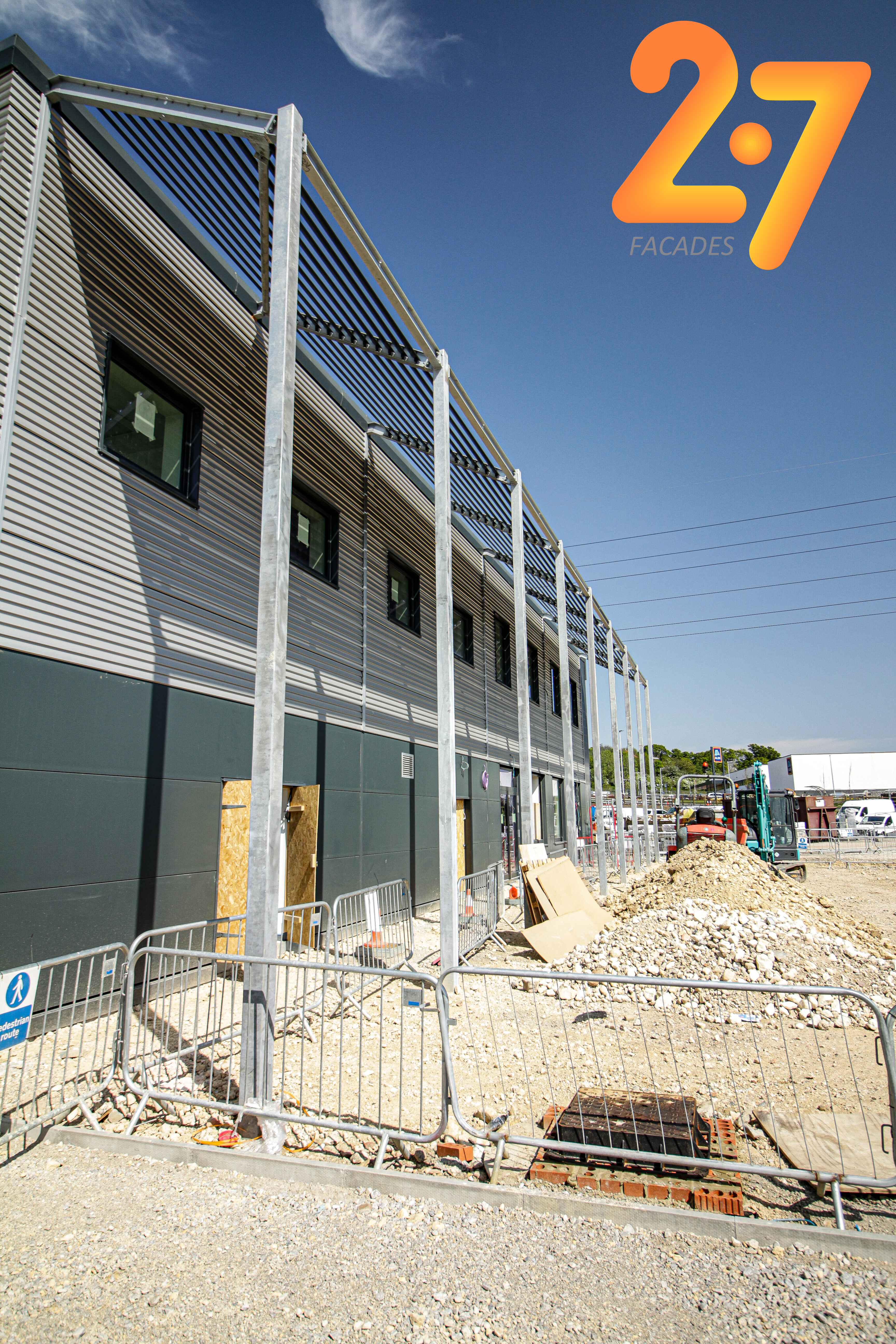Brise soleil
Solar gain is short wave radiation from the sun that heats a building, either directly through an opening such as a window, or indirectly through the fabric of the building. Very broadly, solar gain can be beneficial in cooler climates when it can be used to passively heat buildings. However, too much solar gain can cause overheating and for this reason, Part L of the UK building regulations places restrictions on the amount of glazing that can be used in buildings.
The situation is complicated by the variation of conditions throughout the day and year and the movement of the sun, which can mean that solar gain is beneficial in the morning and evening, or during the winter, but problematic during the middle of the day or in the summer.
Brise soleil can be used to allow low-level sun to enter a building in the mornings, evenings and during winter when it can help heat and light the building, but to shade higher sun during the middle of the day and during the summer which tends to be ‘hotter’, brighter and less beneficial.
Brise soleil are external shading structures which can be fitted over the entire exterior of a building or solely over the windows. They can range from simple lattices or patterned concrete structures, to mechanical baffles, offering architects a practical solution for controlling year round solar radiation, reducing energy costs and helping to reduce glare.
A typical brise soleil extends horizontally from the exterior of glazed sections on buildings to help reduce glare and prevent the building from overheating by reflecting direct, high-level light, but transmitting diffuse and low-level light. Louvres are often incorporated into brise soleil that can be angled to optimise the shading provided depending on the local conditions and the design of the building.
Brise Soleil can be fixed or motorised (automatic or manual), and can be part of a curtain walling system or independent structures. As they are designed to intercept the strong summer sun, they can also incorporate photovoltaic cells.
The southern sides of buildings typically require horizontal, angled baffles to block the high summer sun. For the east and west facing sides of a building a motorised fin system can be used, to follow the sun and actively control the solar gain of the building. This allows optimum protection at the appropriate time of day and year.
[edit] Related articles on Designing Buildings Wiki.
Featured articles and news
Latest Build UK Building Safety Regime explainer published
Key elements in one short, now updated document.
UKGBC launch the UK Climate Resilience Roadmap
First guidance of its kind on direct climate impacts for the built environment and how it can adapt.
CLC Health, Safety and Wellbeing Strategy 2025
Launched by the Minister for Industry to look at fatalities on site, improving mental health and other issues.
One of the most impressive Victorian architects. Book review.
Common Assessment Standard now with building safety
New CAS update now includes mandatory building safety questions.
RTPI leader to become new CIOB Chief Executive Officer
Dr Victoria Hills MRTPI, FICE to take over after Caroline Gumble’s departure.
Social and affordable housing, a long term plan for delivery
The “Delivering a Decade of Renewal for Social and Affordable Housing” strategy sets out future path.
A change to adoptive architecture
Effects of global weather warming on architectural detailing, material choice and human interaction.
The proposed publicly owned and backed subsidiary of Homes England, to facilitate new homes.
How big is the problem and what can we do to mitigate the effects?
Overheating guidance and tools for building designers
A number of cool guides to help with the heat.
The UK's Modern Industrial Strategy: A 10 year plan
Previous consultation criticism, current key elements and general support with some persisting reservations.
Building Safety Regulator reforms
New roles, new staff and a new fast track service pave the way for a single construction regulator.
Architectural Technologist CPDs and Communications
CIAT CPD… and how you can do it!
Cooling centres and cool spaces
Managing extreme heat in cities by directing the public to places for heat stress relief and water sources.
Winter gardens: A brief history and warm variations
Extending the season with glass in different forms and terms.
Restoring Great Yarmouth's Winter Gardens
Transforming one of the least sustainable constructions imaginable.























